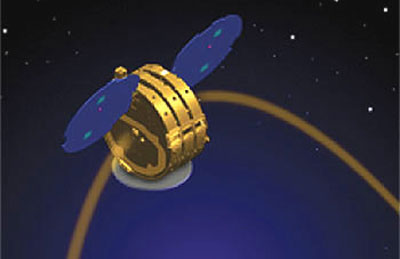Near space: balloons, satellites, and suborbital rocketsby Taylor Dinerman
|
| The enthusiasm of the Air Force’s leadership for “near space” vehicles is undiminished. |
The report explains that recovering the payloads from these operations is uncertain and difficult under the best of circumstances. The possibility of a near space craft making an uncontrolled landing in a hostile or neutral country adjacent to a war zone is one of the drawbacks identified in recent studies. Another problem, mentioned by the NRO’s Peter Rustan, in a recent Aviation Week note, is that these systems, like RLVs, have a mass fraction problem of their own. Above about 23,000 meters, it seems, their payload is seriously limited.
Lighter-than-air vehicles floating far above the battlefield and controlled by a theater commander, rather than by the good folks in Colorado Springs or Chantilly, must appeal to generals who’ve probably had some less-than-favorable experiences of their own waiting for their urgent requests to be fulfilled by forces thousands of kilometers away and completely outside their chains of command.
To deal with the same problem from space, rather than from near space, the Air Force and the Navy are planning to launch the TacSat 1 experimental satellite. The program cost for this 110-kilogram spacecraft looks is about 15–20 million dollars. This launch has gotten a lot of attention because it will ride into orbit on top of one of the first Falcon 1 rockets built by Elon Musk’s startup, SpaceX. Less attention, though, has been paid to the concept of operations that this spacecraft will use. As part of the Operationally Responsive Space concept under development by the Defense Department, TacSat 1 will be controlled by operators in the field rather than by a control center in the US. Later versions could fulfill the same ISR role as a near space vehicle.
Assuming that the Defense Department needs a constellation of 40 satellites to do the job of one or two near space vehicles, and that a future production TacSat-type craft would cost no more than $20 million each, procurement costs would be no more than $800 million. How confident is the Air Force and other DoD space leaders that a near space craft developed under the current acquisition system would cost less than a billion dollars?
| How confident is the Air Force and other DoD space leaders that a near space craft developed under the current acquisition system would cost less than a billion dollars? |
An alternative approach features the use the suborbital RLVs now being designed and built for the emerging space tourism market and other private sector purposes. Such vehicles, optimized to travel safely and reliably into near space several times a week with a payload of two or more human passengers, could be modified to carry an array of sensors up and back at times and places of a theater commander’s choosing. Scaled Composites’ new vehicle, as well as the one now being designed by TGV Rockets, should be included in any near space analysis of alternatives.
Before they reach that level of detail, senior leaders should examine the assumptions on which this requirement is based. The natural desire of theater commanders to have their own assets could be weighed against the future ability of the troops in the combat zone to have constant access to multi-source ISR information via the Defense Information Systems Agency’s planned Net-Centric Enterprise Services (NCES) program. Over the years, forces at the tip of the spear have often been promised quick, secure, and reliable intelligence information from national assets. These Tactical Exploitation of National Capabilities Programs (TENCAP) have, according to many sources, not lived up to expectations.
If the Defense Department and the new National Intelligence Directorate are going to keep faith with America’s men and women on far-flung battlefields, they should take a careful look at why past programs have failed to deliver. Spending a billion to solve a problem that could be solved quicker and better with less money by adjusting bureaucratic regulations or by buying a system that is already being developed could be a far better alternative, at least for the ISR part of the problem.
